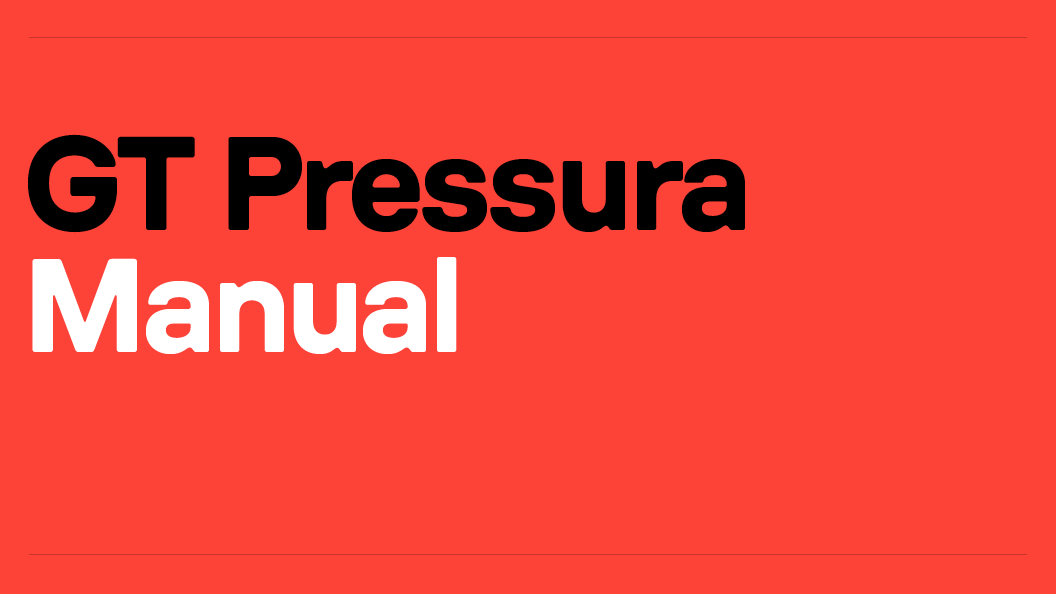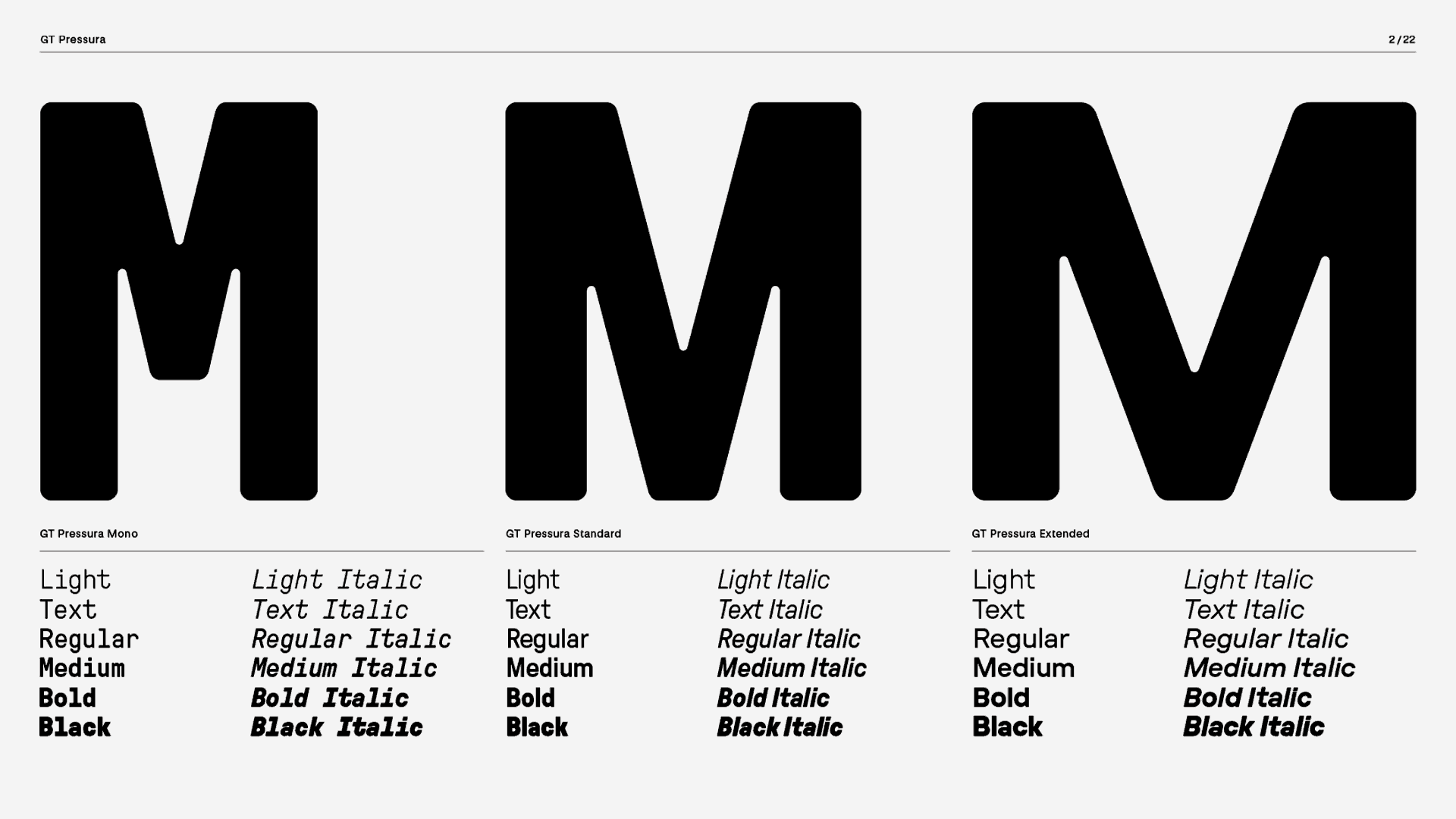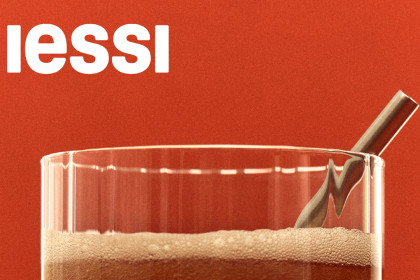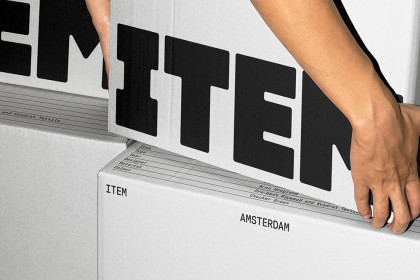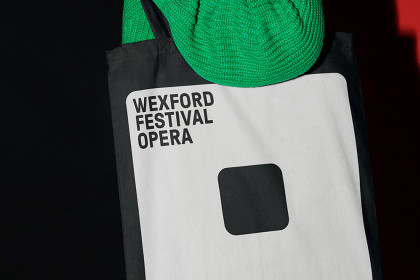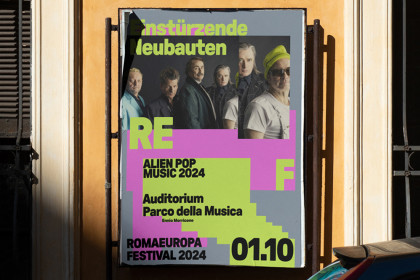GT Pressura
Family overview
- Standard
- Light Italic
- Text Italic
- Regular Italic
- Medium Italic
- Bold Italic
- Black Italic
- Mono
- Light Italic
- Text Italic
- Regular Italic
- Medium Italic
- Bold Italic
- Black Italic
- Extended
- Light Italic
- Text Italic
- Regular Italic
- Medium Italic
- Bold Italic
- Black Italic
Subfamilies
- Standard LightPuts people on streets
- Standard Light ItalicIn 2010 containers accounted for 60% of the world's seaborne trade. The predominant alternative methods of transport carry bulk cargo – whether gaseous,
- Standard TextΤα πλοία που μεταφέρουν έτοιμα συσκευασμένα φορτία σε τέτοιες κατασκευές ονομάζονται επίσημα εμπορευματοκιβωτιοφόρα συνηθίζεται όμως αντ' αυτού ο αγγλικός όρος κοντέινερ σιπ ως περισσότερο εύχρηστος.
- Standard Text ItalicThese are the days it never rains but it pours
- Standard Regular45' High Steel Cargo, 60,960 lb, 45' x 8' x 9'6", 3,036 cubic feet
- Standard Regular ItalicУ разі, якщо вантаж поставлений на судно в більшій кількості, ніж передбачено договором, розмір фрахту відповідно збільшується.
- Standard MediumIn 2010 containers accounted for 60% of the world's seaborne trade. The predominant alternative methods of transport carry bulk cargo – whether gaseous,
- Standard Medium ItalicСлужебный роман с английскими субтитрами is a Soviet comedy film directed by Eldar Ryazanov in 1977.
- Standard Bold20' Standard Steel, 28,300 kg, 20'×8'×8'6", 33m3
- Standard Bold ItalicLive Plants Please Rush, Do not let the plants perish needlessly. Labels help prevent damage.
- Standard BlackCryogenic Liquid, Help prevent contact with cryogenic liquids! These substances can cause serious damage to the eyes or your skin or can cause frostbite injuries.
- Standard Black ItalicΤύπος ΙΑ: 40 Χ 8 Χ 8 πόδια ή Τύπος ΙΒ: 30 Χ 8 Χ 8 πόδια
- Settings
Typeface information
GT Pressura is inspired by metal type printing history as well as engineered letters stamped onto shipping boxes. It uses the visual gesture of ink spreading under pressure as a stylistic device, offering an alternative to more spindly typefaces of the digital age.
Typeface features
OpenType features enable smart typography. You can use these features in most Desktop applications, on the web, and in your mobile apps. Each typeface contains different features. Below are the most important features included in GT Pressura’s fonts:
- TNUM
- Tabular Figures
13.07.2048
- SS01
- Alternate a
React
- CASE
- Case sensitive forms
¿TE GUSTA?
Typeface Minisite
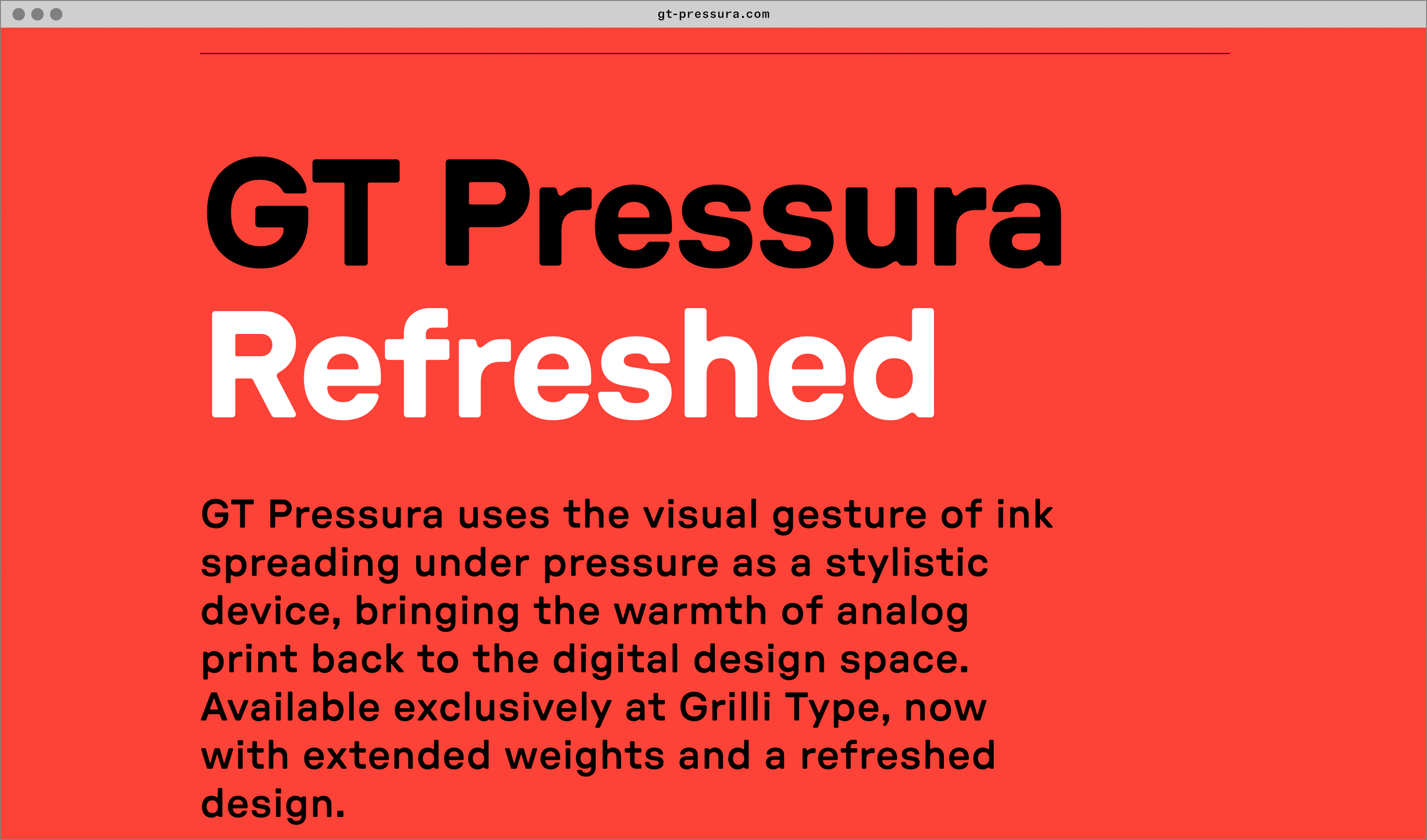
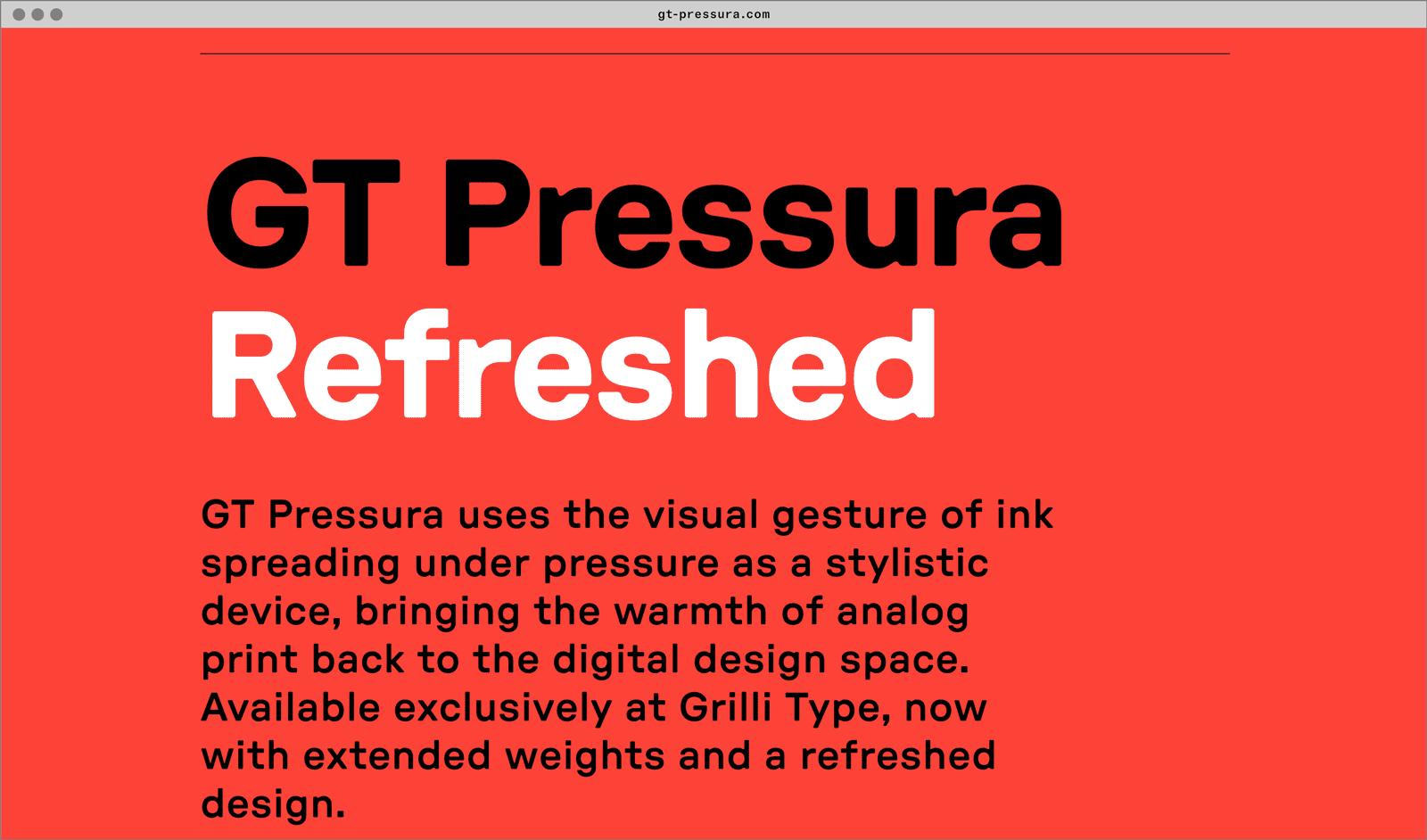
- Visit the GT Pressura minisite to discover more about the typeface family’s history and design concept.
GT Pressura in use
